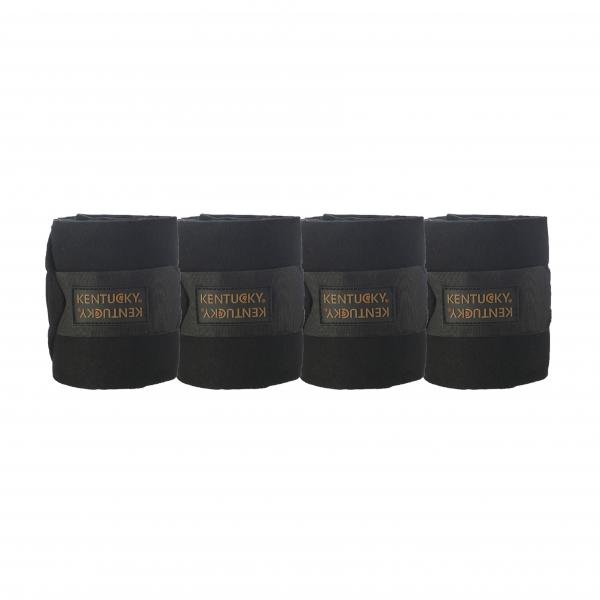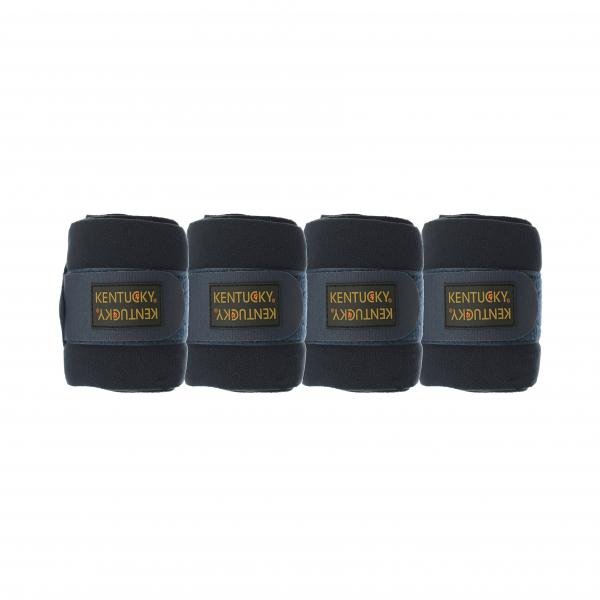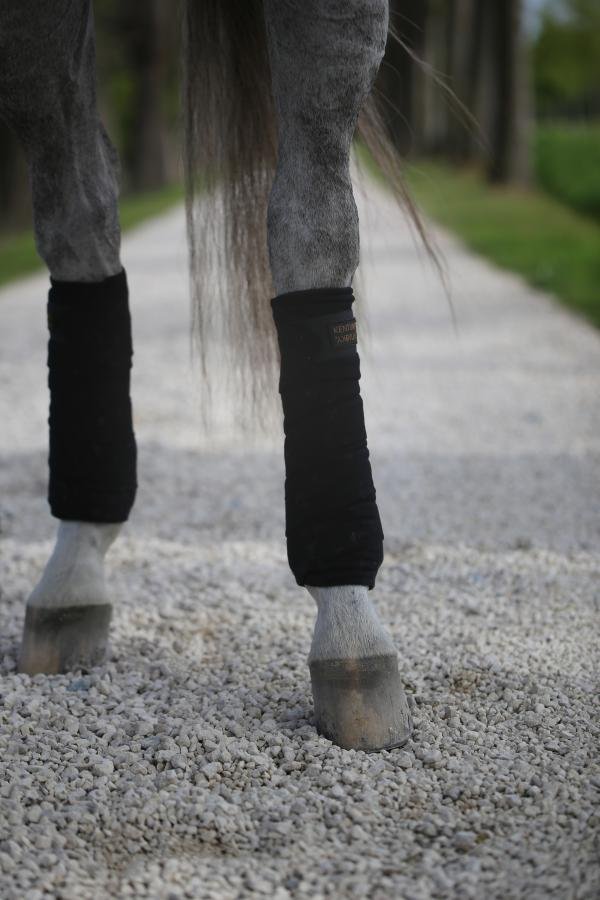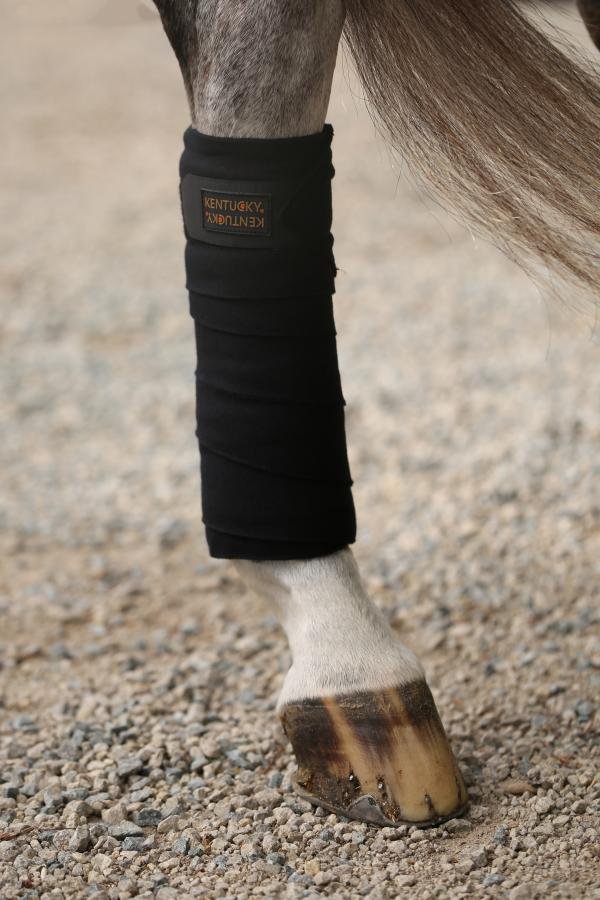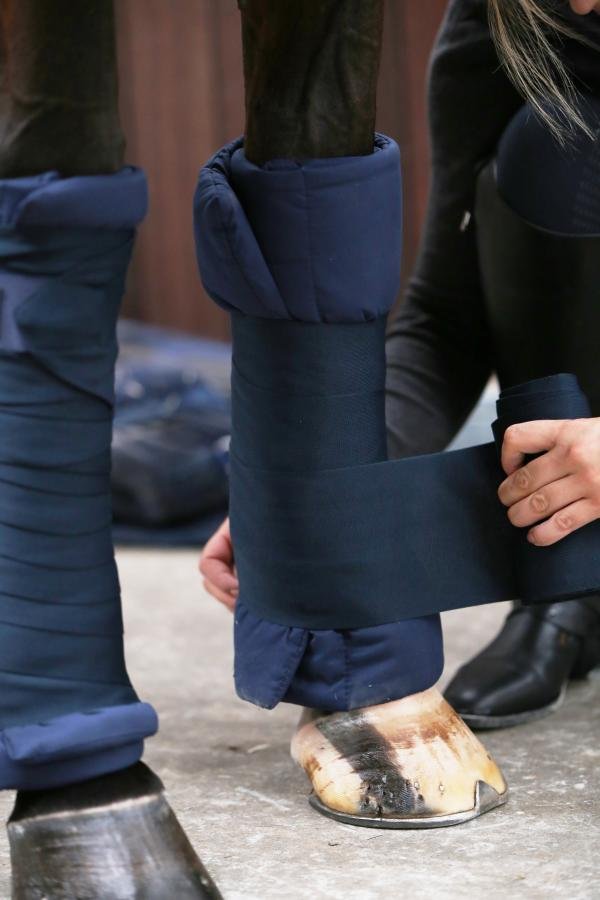The Kentucky Horsewear Polar Fleece Bandages features a strong Velcro fastening and is designed with a high-quality fleece to avoid pilling.
These bandages measure 3.25 m x 12 cm and offer great support to the tendons during work.
The Kentucky Horsewear Polar Fleece Bandages comes in a zipped case for easy transport and are machine washable at 30° (no dryer) for easy care.
Reasons To Bandage
Leg bandages are beneficial for several reasons:
- Provide support for tendons and ligaments during strenuous workouts
- Prevent or reduces swelling (edema) after exercise, injury or during stall rest
- Protect legs from concussion and impact
- Shield leg wounds from contamination and aid in healing.
For more information click HERE
If you are looking for some bandage pads, then keep reading!
The Kentucky Horsewear Stable Bandage Pads are an ideal alternative to traditional travel boots as they are much softer on the horse’s skin.
Horse’s that are in a competitive environment could benefit immensely from bandages/leg wraps.
To secure and cover an injured area, you have to wrap your horse’s legs.
It’s key to provide protection to stiff/old tendons, ligaments, or fetlocks and to help prevent/cure stiff or swollen tendons and fetlocks.
Wraps applied incorrectly can do a great deal of damage.
If the wrap is too tight, it could compromise your horse’s blood supply.
If the wraps are applied with uneven pressure they may slip down and bunch up.
A properly applied bandage will remain in place without slipping, lying snugly against the skin of your horse but not snug enough to indent it.
You should be in a position to slide a fingertip between the bandage and the leg of your horse.
Leaving a horse’s legs unbandaged is better than bandaging incorrectly.
It simply takes the right materials and a bit of practice.
| Colour |
|---|

